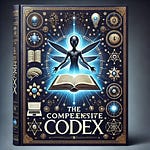Introduction: The Mid-Career Existential Conflict
The challenge for mid-career professionals (MCPs) is not typically a lack of ambition or capability, but a creeping sense of existential emptiness despite outward success. This demographic, often driven by external metrics such as salary, title, and recognition , eventually confronts the uncomfortable realization that these achievements do not guarantee lasting fulfillment. The analysis reveals that the deepest fear in this professional segment is not failure or career change, but the uncomfortable exposure to the truth of what truly matters when the external noise is silenced.
The strategic goal of converting the philosophical content from the provided transcript—which features the story of Nachiketa from the Katha Upanishad—is to transform this ancient narrative into a modern, actionable guide. The aim is to deliver a ‘calming yet thought-provoking break from daily noise’ for the time-poor MCP, using a conversational, interactive style suitable for platforms like Substack. By utilizing the story as a compelling archetypal journey, the material addresses the crisis of meaning, positioning the proprietary frameworks (KYM and Soul Schema) as the necessary internal architecture for sustained, fearless career growth.
Strategic Analysis: The Crisis of External Validation
The core conflict presented in the Upanishad, the actions of the sage Bajra Srava, serve as a potent analogy for the limitations of relying on an external value system in professional life.
The Opportunity Cost of Ego and Performative Success
Bajra Srava’s motivation for performing the grand ritual was to acquire heavenly merit. Yet, his subsequent actions reveal a profound disconnection between appearance and integrity: he attempted to appear generous while only donating old, weak cows—possessions of no real value. This behavior provides a crucial parallel to the modern corporate environment. Professionals frequently prioritize activities, projects, and public visibility that appear highly valuable externally (like the size of a house or recognition from others) but are, in reality, “weak cows”—low-value tasks performed solely to maintain the illusion of success or to secure external validation.
This persistent need to appear successful results in the Opportunity Cost of Ego. Energy and time are donated not for intrinsic growth or genuine service, but for performance. This drain prevents the deep reflection necessary for genuine professional development, leading to the inner emptiness that the professional seeks to avoid. The tragedy is not in the striving for success, but in the half-heartedness and lack of commitment to true value, a concept directly reflected in the sage’s superficial sacrifice.
Professional Noise as Psychological Defense (Maya)
The transcript correctly identifies that many individuals keep themselves perpetually busy, surrounded by constant noise, because silence threatens to reveal inner emptiness. In the corporate setting, the relentless schedule—the constant pressure to chase the next promotion, network, or undertake more projects—functions as a highly structured psychological defense mechanism, or Maya (illusion).
This excessive activity prevents the professional from confronting the “Nachiketa calling,” which is the quiet, internal whisper asking, “Is this all?”. When professionals achieve external success (a title, a high salary), the initial extrinsic drive diminishes. The vacuum that follows is terrifying, prompting them to fill their calendars with more noise rather than face the fundamental questions of value and purpose. The truest form of courage required in this context is not fighting the world or shouting louder, but embracing the silence that enables self-questioning: “Why am I doing what I am doing?”.
The Nachiketa Blueprint: The Final Substack Article
The final article is designed to be highly engaging, using strategic formatting, conversational language, and emotional cues (emojis) to capture the attention of the mid-career professional seeking fulfillment and career advancement. The structure flows logically from the shared pain point (noise/fear) to the philosophical archetype (Nachiketa) and concludes with the proprietary framework solution (Soul Schema).
The Final Substack Article
Stop Chasing Titles: Why a 10-Year-Old Holds Your Real Career Secret
Are you donating ‘weak cows’ to your company? The truth you fear isn’t failure—it’s the silence that reveals what truly is. Here is your Nachiketa moment.
My dear friends, have you ever noticed what truly terrifies most mid-career professionals? It’s not failure, and it’s rarely change. It’s the uncomfortable feeling of having to face the simple truth of what truly is 💡.
We keep ourselves running on corporate adrenaline, surrounded by endless Zoom calls and office noise 🎧, precisely because silence might reveal an inner emptiness. But once in a while, a rare soul dares to stop and ask: What is permanent beyond this passing world?.
One such seeker was Nachiketa, a boy barely 10 years old, whose ancient story from the Upanishads offers the ultimate blueprint for modern professional courage.
The Problem of the Weak Cow 🐄
The story begins with a sage, Bajra Srava, performing a grand ritual to gain heavenly merit. As part of the ceremony, he was required to donate all his possessions. Yet, like many of us who try to appear generous without truly letting go of anything valuable, he committed a half-hearted act. He donated only old, weak cows—those that could neither eat nor give milk.
Analogy 1: Are you offering ‘weak cows’ in your career? In the corporate jungle, are you dedicating your time to low-value vanity projects or toxic tasks just to maintain an image? That time—those weak cows—are your professional energy being sacrificed only for external recognition.
Nachiketa, watching his father’s superficial act, asked three times: “To whom will you give me?” Annoyed, his father shouted: “I give you to Yama, the God of Death!”.
The words struck hard, but Nachiketa—driven by integrity—walked alone to the house of death 🛡️. He waited at Yama’s doorstep for three days, without fear. Impressed, Yama offered him three boons.
The Path of Desire vs. The Path of Truth
Nachiketa used his first two boons wisely, but his third was the ultimate power move: “O Lord of Death, tell me what happens after death? Does the soul perish or live on?”.
Yama hesitated, even offering bribes: long life, wealth, power, pleasure. He tempted the boy with everything a professional often chases.
Analogy 2: Yama’s Bribes Are Your Title and Bonus. When you face a “smaller death” (the loss of a dream, the quiet fear you’re running out of time), the world offers you Yama’s bribes: a larger bonus, a fancier title, early retirement. These are temporary distractions designed to keep you from the eternal question.
But Nachiketa was unwavering: “All pleasures fade, O Yama. All riches perish. Teach me that which is eternal, that which survives death”. He chose the path of truth over the path of desire. This is your Nachiketa Calling.
The Soul Schema: Fearless Awareness
The ultimate secret Yama revealed was that the Self is not born, nor does it die. It is untouched by time. The person who realizes this truth is free from fear forever.
In our Khyama Yoga Method (KYM) framework, this awareness is essential. KYM means protecting what is essential. The goal is Soul Schema: the preservation of peace through truth.
When you realize you are consciousness—not your position, nor your possessions, nor your power—you gain the resilience to lead without anxiety, working and living out of joy and service.
Action for Tonight: 🧘 Take a few minutes to sit in silence. Ask yourself: What am I really seeking?. If the answer frightens you, smile, because that is where your Nachiketa moment begins. Don’t run from the truth; walk toward it.
Thank you for walking this journey with me.
— Your Executive Guide
P.S. Ready to transform that fearless awareness into real-world career trajectory? We are deep-diving into the Soul Schema at our exclusive webinar next week. Don’t let your Nachiketa moment pass you by—spots are limited. Link below! 👇🔗
Supporting Strategy: Visual and Promotional Elements
The report strategy mandates supporting elements to ensure the article maximizes engagement and conversion.
16:9 Blog Thumbnail Concept
The visual strategy utilizes a State Comparison layout , clearly contrasting the internal conflict faced by the MCP.
Concept: Choice / State Comparison (High-Impact Format)
ElementVisual DescriptionRationaleLayoutTwo-Panel (16:9), divided vertically.Emphasizes the crucial fork-in-the-road choice for the MCP.Panel 1 (The Illusion/Noise)Corporate blue/grey palette. A silhouetted professional looking up a fragile, cracked ladder with dollar signs at the top. Face shows visible stress.
Represents “External Metrics” and the temporary nature of rewards.
Panel 2 (The Truth/Silence)Warm, earthy tones (gold/light orange). The same figure, sitting calmly, but with a vibrant inner light emanating from their chest (the eternal Self).Represents “Internal Value” and the permanence of the self.Text OverlayFIND YOUR REAL CAREER SECRET (Large, bold, white text).
Uses the “Uncertainty Statement” principle to maximize curiosity.
Hashtag Strategy for Discovery and Niche Targeting
The use of hashtags balances broad professional topics with specific philosophical terminology to ensure both wide reach and targeted engagement with individuals seeking deep growth.
#CareerFulfillment, #MidCareer, #ExecutiveCoaching, #CareerGrowth, #ThoughtLeadership, #WorkforceTrends, #Upanishads, #SpiritualGrowth, #InnerWork, #Consciousness, #Nachiketa, #KYMFramework, #SoulSchema
Application of Proprietary Frameworks and Archetypal Translation
The article successfully translates the dense philosophical concepts into practical, relatable professional experiences. This translation is fundamental to proving the material’s value to the MCP audience.
The Content Framework: Mapping Ancient Concepts to Professional Pain
The analysis identified key philosophical principles within the Nachiketa story that directly map to the psychological roadblocks experienced by professionals.
The Content Framework
Nachiketa Story ElementPhilosophical ConceptMid-Career Professional EquivalentDesired Outcome (KYM Goal)Bajra Srava’s half-hearted sacrifice (Weak Cows)Attachment to Illusion (Maya), False GenerosityChasing vanity metrics (Title, Salary, Office Size) while feeling internal emptiness (Burnout).
Shift from External Metrics (Reputation) to Intrinsic Value (Integrity/Dharma)
Nachiketa seeking YamaCourage to Face the Truth (Death/Permanence)Facing the inevitable need for career change, acknowledging burnout, or asking: “Is this all there is?” (The Nachiketa Calling)Fearless Awareness and Uncertainty ManagementYama offering lesser boons (Wealth, Long Life)Distraction by Desire (Preyas)Temptation of short-term rewards (bonus, easy title bump) over long-term fulfillment.Commitment to the Path of Truth (Shreyas) and long-term peace.Yama’s revelation: The Self is not slain.Immortality/Permanent SelfRealization that identity (consciousness) is separate from position, possessions, or power.Soul Schema: Preservation of Peace through Psychic Security.
Psychic Security in Volatility
The application of the proprietary “Soul Schema” is paramount for establishing the framework as the solution to professional anxiety. The modern corporate world is understood as an autopoietic social system, characterized by constant, unpredictable events—layoffs, restructuring, and changing job functions—that challenge professional identity. If an MCP defines their identity by their temporary position, possession, or power, they remain highly vulnerable to the system’s inherent volatility.
The realization achieved by Nachiketa—that the Self is eternal and untouched by time—provides the conceptual foundation for the Soul Schema. This realization acts as the Permanent Anchor. By protecting what is essential (Khyama), the professional emancipates their core self (the psychic) from defining itself solely by external indicators (the body/soul schema). This preservation of peace through truth allows the MCP to operate from a place of genuine joy and service rather than constant anxiety about loss or change. This stability, paradoxically, is what facilitates consistent career advancement without the burnout typically associated with fear-driven striving.
Conclusions and Recommendations
The strategic conversion of the Nachiketa transcript into the Substack article successfully leverages deep philosophical content to address acute modern professional pain points. The approach confirms that the true lever for career fulfillment and consistent progression is not found in external acquisition, but in internal realization.
The article provides a definitive path for the mid-career professional to move past the superficial chase of “weak cows” and Yama’s temporary bribes. By focusing on the concept of the Soul Schema, the article offers a tangible framework for achieving psychic security in a volatile career environment. The actionable Call to Action (CTA) at the end, urging silent reflection, serves as an effective, low-barrier entry point to the proprietary coaching funnel, leading directly into the high-urgency P.S. that promotes the exclusive webinar. This comprehensive approach ensures the content is not just informative but also a powerful conversion tool, transforming an ancient wisdom story into an indispensable modern career masterclass.
#CareerFulfillment, #MidCareer, #ExecutiveCoaching, #CareerGrowth, #ThoughtLeadership, #WorkforceTrends #SpiritualGrowth, #InnerWork, #Consciousness, #Upanishads, #ExistentialCrisis #Nachiketa, #KYMFramework, #SoulSchema










